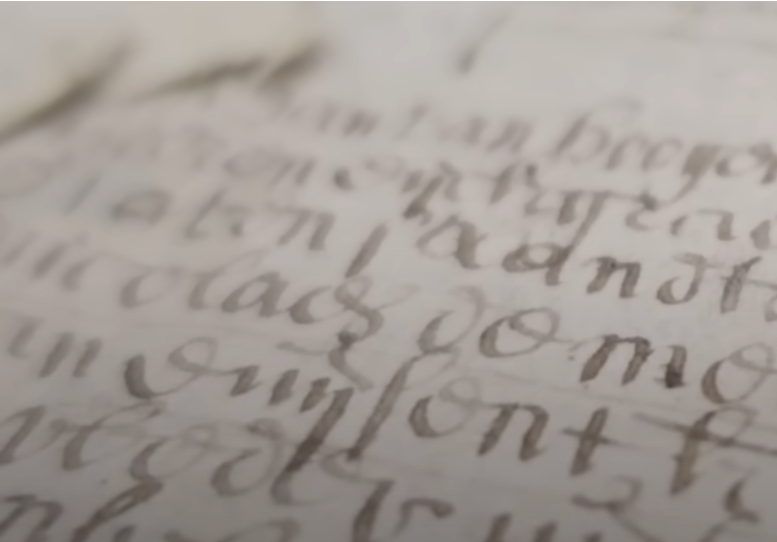News
The World’s Oldest Bond Just Celebrated Its 400th Birthday And Still Pays an €13.64 Annual Yield

Source: YouTube
On December 10, 1624, a Dutch water authority issued a bond to fund repairs for a critical dike breach. Four centuries later, that bond is still alive, making it the oldest bond in the world. This perpetual bond, issued by Hoogheemraadschap Lekdijk Bovendams, continues to pay interest, reminding us of the enduring power of financial innovation.
The 400th-anniversary celebration saw representatives of the bond's current owner, the New York Stock Exchange (NYSE), receive an interest payment of €299.42 in Utrecht, Netherlands. Despite the modest annual yield of €13.64, the bond is a testament to the Dutch mastery of financial systems, which played a pivotal role in shaping modern markets.
The Origins of the World’s Oldest Bond
In 1624, the Netherlands faced a devastating dike breach along the River Lek, threatening Amsterdam and surrounding areas. To fund the necessary repairs, Hoogheemraadschap Lekdijk Bovendams issued more than 50 perpetual bonds, raising 23,000 Carolus guilders.
One bond, purchased by a wealthy Amsterdam resident, Elsken Jorisdochter, for 1,200 Carolus guilders, promised 2.5% interest in perpetuity. While most of the bonds were eventually redeemed or lost, this particular bond survived wars, revolutions, and even currency changes, transitioning from guilders to euros. By the 20th century, a Dutch-American banker acquired the bond at auction and donated it to the NYSE in 1938 as a gesture of goodwill. Today, it remains a cherished artifact in financial history, and its interest payments are still honored by Hoogheemraadschap De Stichtse Rijnlanden, the successor to the original issuer.
Why This World’s Oldest Bond Record Will Be Hard to Break
The survival of the world’s oldest bond is an extraordinary feat, made possible by its perpetual nature and the Dutch commitment to honoring financial obligations. Unlike most bonds, which have fixed maturity dates, perpetual bonds require no principal repayment and continue to pay interest indefinitely.
Several factors contribute to this bond's unbreakable record:
- Robust Dutch Financial Practices: The Dutch pioneered modern financial systems, creating sophisticated bond markets. Their emphasis on trust and accountability ensured long-term adherence to obligations, even across centuries.
- Stability of Successor Organizations: While the original issuer no longer exists, its successor, Hoogheemraadschap De Stichtse Rijnlanden, has continued to honor the bond's terms. This seamless transition underscores the reliability of Dutch institutions.
- Global Rarity of Perpetual Bonds: Few bonds are structured to last indefinitely, and even fewer survive the ravages of time, including wars and economic upheavals.
- Symbolic Ownership: The NYSE’s stewardship of the bond ensures its preservation as a historical artifact. Its value lies not just in monetary terms but as a symbol of enduring financial innovation.
The World’s Oldest Bond’s Enduring Legacy
This bond has witnessed centuries of history, from the Dutch Golden Age to modern financial globalization. It has outlasted numerous political regimes, economic systems, and even the original purpose it was issued to address. The dike it helped repair still stands, a physical testament to the bond's impact.
While the bond’s interest payments are modest, the fact that it remains active after 400 years is a remarkable achievement. In 2024, as the NYSE collected its latest payment, it donated the funds to a local museum, ensuring that the story of the dike and the bond lives on.
Modern Context: Bonds and Debt Today
In today’s financial world, bonds play an essential role in funding everything from government deficits to infrastructure projects. However, perpetual bonds are rare, and the pressures of modern debt markets make it unlikely for another bond to achieve such longevity.
The United States, for instance, spends $1 trillion annually on interest payments due to rising rates and deficits, underscoring the fragility of modern debt systems compared to the stability demonstrated by the 1624 bond.
The World’s Oldest Bond: A Unique Financial Wonder
The world’s oldest bond is more than just a piece of paper; it’s a living example of financial ingenuity and the enduring power of trust. Its 400-year history reflects the Dutch commitment to sustainability and responsibility, values that modern financial markets can still learn from today.
Do you think perpetual bonds have a place in today’s financial world?



